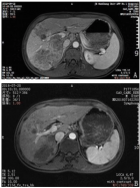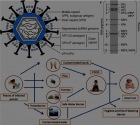Abstract
Case Report
Embolic Septic Emboli with MRSA: A different source
Christian Castillo Latorre*, Mariela Rivera Agosto, Ilean Lamboy Hernandez, Mariana Mercader Perez, Dominic Sanchez Paredes, Marisol Santiago Irizarry, Jose Gutierrez Nuñez Onix, Cantres Fonseca, Alfonso Torres Palacios and William Rodriguez Cintron
Published: 12 December, 2019 | Volume 4 - Issue 1 | Pages: 044-047
Septic Iliac vein thrombophlebitis with associated psoas abscess is a rare and severe entity, which diagnosis is challenging when no risk factor is clearly present. We are presenting a case of severe septic cavitary pulmonary emboli complicated with Acute Respiratory Distress Syndrome (ARDS) that evolved rapidly to respiratory distress and multi organ failure.
A 61-year-old Hispanic male, had multiple emergency department visits due to back pain, being most of them intramuscular pain medications and steroids. In the history, he had back pain that worsened accompanied by poor mobility, generalized malaise, fever and chills. Computed tomography (CT) scan showed a paravertebral psoas abscess with L5 - S1 diskitis/spondylitis inflammatory changes, which was then later evidenced by a gallium study. Further imaging studies were done, showed bilateral cavitary lung lesions, consistent with septic emboli. Subsequent blood cultures were positive for Methicillin Resistant Staphylococcus Aureus (MRSA), for which a successful combined therapeutic regimen was used. Transthoracic and transesophageal echocardiogram were not suggestive of endocarditis. Staphylococcus aureus (SA) bacteremia is one of the most common serious bacterial infections with a high risk of metastatic complications, which makes this pathogen a unique one. The combination of factors iliac vein thrombophlebitis, psoas muscle abscess, diskitis/spondylitis with ARDS makes cavitary pulmonary disease a challenging perspective. After a 6-week antimicrobial treatment, full anticoagulation, his clinical condition and image findings improved, and he was recently admitted for physical rehabilitation. Major vessels thrombophlebitis should always be considered, when primary source of septic pulmonary emboli is not clear. This case illustrates the complexity of illness and complications that may arise from a source of infection as the one in this patient. Further therapeutic strategies were tailored accordingly.
Read Full Article HTML DOI: 10.29328/journal.jcicm.1001026 Cite this Article Read Full Article PDF
References
- Losno RA, Vidal-Sicart S, Grau JM. Multiple pyomyositis secondary to septic thrombophlebitis. Med Clin (Barc). 2019; 152: 515-516. PubMed: https://www.ncbi.nlm.nih.gov/pubmed/30340839
- Stawicki SP, Firstenberg MS, Lyaker MR, Russell SB, Evans DC, et al. Septic embolism in the intensive care unit. Int J Crit Illn Inj Sci. 2013; 3: 58-63. PubMed: https://www.ncbi.nlm.nih.gov/pubmed/23724387
- Ye R, Zhao L, Wang C, Wu X, Yan H. Clinical characteristics of septic pulmonary embolism in adults: A systematic review. Respir Med. 2013; 108: 1-8. PubMed: https://www.ncbi.nlm.nih.gov/pubmed/24183289
- Cook RJ, Ashton RW, Aughenbaugh GL, Ryu JH. Septic pulmonary embolism: presenting features and clinical course of 14 patients. Chest. 2005; 128: 162-166. PubMed: https://www.ncbi.nlm.nih.gov/pubmed/16002930
- Baddour LM, Wilson WR, Bayer AS, Fowler VG Jr, Tleyjeh IM, et al. Infective endocarditis in adults: diagnosis, antimicrobial therapy, and management of complications: a scientific statement for healthcare professionals from the American Heart Association. Circulation. 2015; 132: 1435-1486. PubMed: https://www.ncbi.nlm.nih.gov/pubmed/26373316
- Greaves K, Mou D, Patel A, Celermajer DS. Clinical criteria and the appropriate use of transthoracic echocardiography for the exclusion of infective endocarditis. Heart. 2003; 89: 273-275.
- Green RS, Travers AH, Cain E, Campbell SG, Jensen JL, et al. Paramedic Recognition of Sepsis in the Prehospital Setting: A Prospective Observational Study. Emerg Med Int. 2016; 2016; 2016.
- Prnjavorac B, Sejdinovic R, Jusufovic E, Mehic J, Bedak O, et al. Septic pulmonary embolisms as a cause of acute respiratory distress syndrome. European Respiratory Journal. 2016; 48.
- Kuhlman JE, Fishman EK, Teigen C. Pulmonary septic emboli: Diagnosis with CT. Radiology. 1990; 174: 211-213. PubMed: https://www.ncbi.nlm.nih.gov/pubmed/2294550
- Kniemeyer HW, Grabitz K, Buhl R, Wüst HJ, Sandmann W. Surgical treatment of septic deep venous thrombosis. Surgery. 1995; 118: 49-53. PubMed: https://www.ncbi.nlm.nih.gov/pubmed/7604379
- Zuo LE, Guo S. Septic pulmonary embolism in intravenous drug users. Chin J Tuberc Respir Dis 2007; 30: 569-572. PubMed: https://www.ncbi.nlm.nih.gov/pubmed/17988547
- Brenes JA, Goswami U, Williams DN. The association of septic thrombophlebitis with septic pulmonary embolism in adults. Open Respir Med J. 2012; 6: 14-19. PubMed: https://www.ncbi.nlm.nih.gov/pubmed/22611460
- Mara Lambert. IDSA Guidelines on the Treatment of MRSA Infections in Adults and Children. Am Fam Physician. 2011; 84: 455-463.
- Shah S, Barton G, Fischer A. Pharmacokinetic considerations and dosing strategies of antibiotics in the critically ill patient. J Intensive Care Soc. 2015; 16: 147-153. PubMed: https://www.ncbi.nlm.nih.gov/pubmed/28979397
- Hodgson CL, Capell E, Tipping CJ. Early Mobilization of Patients in Intensive Care: Organization, Communication and Safety Factors that Influence Translation into Clinical Practice. Crit Care. 2018; 22: 77. PubMed: https://www.ncbi.nlm.nih.gov/pubmed/29558969
- Brummel NE, Girard TD. Preventing delirium in the intensive care unit. Crit Care Clin. 2013; 29: 51-65. PubMed: https://www.ncbi.nlm.nih.gov/pubmed/23182527
Figures:
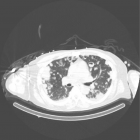
Figure 1
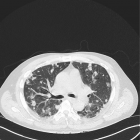
Figure 2
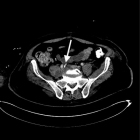
Figure 3
Similar Articles
-
Phenibut Overdose in Combination with Fasoracetam: Emerging Drugs of AbuseCristian Merchan*,Ryan Morgan,John Papadopoulos,David Fridman. Phenibut Overdose in Combination with Fasoracetam: Emerging Drugs of Abuse. . 2016 doi: 10.29328/journal.jcicm.1001001; 1: 001-004
-
Nursing Care of ICU Patients Lightly Sedated with DexmedetomidineÅsa Engström*,Maria Johansson,Mia Mattsson,Ulrica Strömbäck. Nursing Care of ICU Patients Lightly Sedated with Dexmedetomidine. . 2016 doi: 10.29328/journal.jcicm.1001002; 1: 005-013
-
Complicated Hepatitis A Virus Infection: A Report of Three Cases from Single Tertiary Referral CenterOmkolsoum M Alhaddad,Maha M Elsabaawy*,Khalid A Gameel,Marwa Elfauomy,Olfat Hendy,Eman A Rewisha. Complicated Hepatitis A Virus Infection: A Report of Three Cases from Single Tertiary Referral Center. . 2016 doi: 10.29328/journal.jcicm.1001003; 1: 014-020
-
Critical Management of Status EpilepticusFarahnaz Fallahian*,Seyed MohammadReza Hashemian*. Critical Management of Status Epilepticus. . 2017 doi: 10.29328/journal.jcicm.1001004; 2: 001-015
-
Comparative Hemodynamic Evaluation of the LUCAS® Device and Manual Chest Compression in Patients with Out-of-Hospital Cardiac ArrestMirek S,Opprecht N*,Daisey A,Milojevitch E,Soudry- Faure A,Freysz M. Comparative Hemodynamic Evaluation of the LUCAS® Device and Manual Chest Compression in Patients with Out-of-Hospital Cardiac Arrest. . 2017 doi: 10.29328/journal.jcicm.1001005; 2: 016-024
-
Chemotherapy Exposure and outcomes of Chronic Lymphoid Leukemia PatientsJosephina G Kuiper*,Patience Musingarimi,Christoph Tapprich,Fernie JA Penning-van Beest,Maren Gaudig. Chemotherapy Exposure and outcomes of Chronic Lymphoid Leukemia Patients. . 2017 doi: 10.29328/journal.jcicm.1001006; 2: 025-033
-
Knowledge, attitude and practices associated with diagnosis and management of Skin and Soft Tissue Infections (SSTIs) among Pediatric Residents and Physicians in a Tertiary Hospital in United Arab Emirates (UAE)Eiman Al Blooshi,Farah Othman,Abeer Al Naqbi,Majid Al Rumaithi,Khawla Fikry,Mariam Al Jneibi,Hossam Al Tatari*. Knowledge, attitude and practices associated with diagnosis and management of Skin and Soft Tissue Infections (SSTIs) among Pediatric Residents and Physicians in a Tertiary Hospital in United Arab Emirates (UAE) . . 2017 doi: 10.29328/journal.jcicm.1001007; 2: 034-039
-
Unusual presentation of a bilateral basilar stroke: BradycardiaZidouh S*,Jidane S,Nabhani T,Chouaib N,Sirbou R,Belkouch,Belyamani L. Unusual presentation of a bilateral basilar stroke: Bradycardia. . 2017 doi: 10.29328/journal.jcicm.1001008; 2: 040-041
-
Sinking Skin Flap SyndromeLiew BS*,Rosman AK,Adnan JS. Sinking Skin Flap Syndrome. . 2017 doi: 10.29328/journal.jcicm.1001009; 2: 042-048
-
Intensive Care Units (ICU): The clinical pharmacist role to improve clinical outcomes and reduce mortality rate- An undeniable functionLuisetto M*,Ghulam Rasool Mashori. Intensive Care Units (ICU): The clinical pharmacist role to improve clinical outcomes and reduce mortality rate- An undeniable function. . 2017 doi: 10.29328/journal.jcicm.1001010; 2: 049-056
Recently Viewed
-
Successful Treatment of Generalized Pustular Psoriasis during Pregnancy by Cyclosporin and Etanercept: Own Experience and Review of LiteratureRauno J Harvima*, Ilkka T Harvima. Successful Treatment of Generalized Pustular Psoriasis during Pregnancy by Cyclosporin and Etanercept: Own Experience and Review of Literature. Ann Dermatol Res. 2024: doi: 10.29328/journal.adr.1001032; 8: 007-011
-
Types and Outcomes of Diagnostic Measures provided for women Presented with Postmenopausal BleedingMalaz Elsammani,Sahar Elhawari,Gawahir Murad,Khairi Nasr,Alla Abdelgader,Hajar Suliman,Baharelden Abuobida,Bashir Abdeen,Awadalla Abdelwahid*. Types and Outcomes of Diagnostic Measures provided for women Presented with Postmenopausal Bleeding. Clin J Obstet Gynecol. 2025: doi: 10.29328/journal.cjog.1001186; 8: 030-036
-
High-Performance Liquid Chromatography (HPLC): A reviewAbdu Hussen Ali*. High-Performance Liquid Chromatography (HPLC): A review. Ann Adv Chem. 2022: doi: 10.29328/journal.aac.1001026; 6: 010-020
-
Role of RBC Parameters to Differentiate between Iron Deficiency Anemia and Anemia of Chronic DiseasesReena Bhaisare*, Ravindranath M, Gurmeet Singh. Role of RBC Parameters to Differentiate between Iron Deficiency Anemia and Anemia of Chronic Diseases. J Hematol Clin Res. 2023: doi: 10.29328/journal.jhcr.1001024; 7: 021-024
-
Cerebral Autoregulation-Directed Therapy in Adults with Non-Traumatic Brain Injury in Neuro-Critical Care: A Scoping ReviewYassine Haimeur*,Mouhssine Doumiri,Mourad Amor. Cerebral Autoregulation-Directed Therapy in Adults with Non-Traumatic Brain Injury in Neuro-Critical Care: A Scoping Review. J Clin Intensive Care Med. 2025: doi: 10.29328/journal.jcicm.1001053; 10: 013-022
Most Viewed
-
Sinonasal Myxoma Extending into the Orbit in a 4-Year Old: A Case PresentationJulian A Purrinos*, Ramzi Younis. Sinonasal Myxoma Extending into the Orbit in a 4-Year Old: A Case Presentation. Arch Case Rep. 2024 doi: 10.29328/journal.acr.1001099; 8: 075-077
-
Evaluation of Biostimulants Based on Recovered Protein Hydrolysates from Animal By-products as Plant Growth EnhancersH Pérez-Aguilar*, M Lacruz-Asaro, F Arán-Ais. Evaluation of Biostimulants Based on Recovered Protein Hydrolysates from Animal By-products as Plant Growth Enhancers. J Plant Sci Phytopathol. 2023 doi: 10.29328/journal.jpsp.1001104; 7: 042-047
-
Feasibility study of magnetic sensing for detecting single-neuron action potentialsDenis Tonini,Kai Wu,Renata Saha,Jian-Ping Wang*. Feasibility study of magnetic sensing for detecting single-neuron action potentials. Ann Biomed Sci Eng. 2022 doi: 10.29328/journal.abse.1001018; 6: 019-029
-
Physical activity can change the physiological and psychological circumstances during COVID-19 pandemic: A narrative reviewKhashayar Maroufi*. Physical activity can change the physiological and psychological circumstances during COVID-19 pandemic: A narrative review. J Sports Med Ther. 2021 doi: 10.29328/journal.jsmt.1001051; 6: 001-007
-
Pediatric Dysgerminoma: Unveiling a Rare Ovarian TumorFaten Limaiem*, Khalil Saffar, Ahmed Halouani. Pediatric Dysgerminoma: Unveiling a Rare Ovarian Tumor. Arch Case Rep. 2024 doi: 10.29328/journal.acr.1001087; 8: 010-013

HSPI: We're glad you're here. Please click "create a new Query" if you are a new visitor to our website and need further information from us.
If you are already a member of our network and need to keep track of any developments regarding a question you have already submitted, click "take me to my Query."






